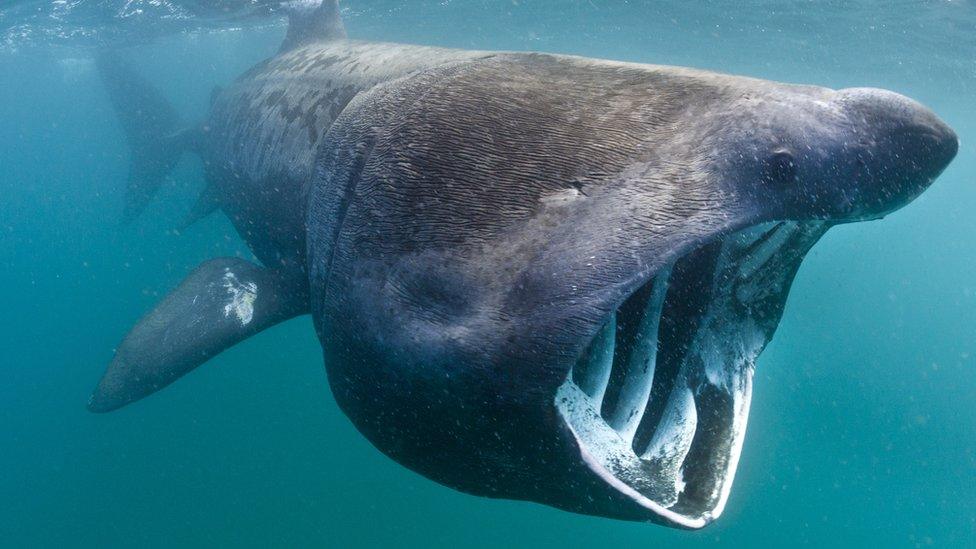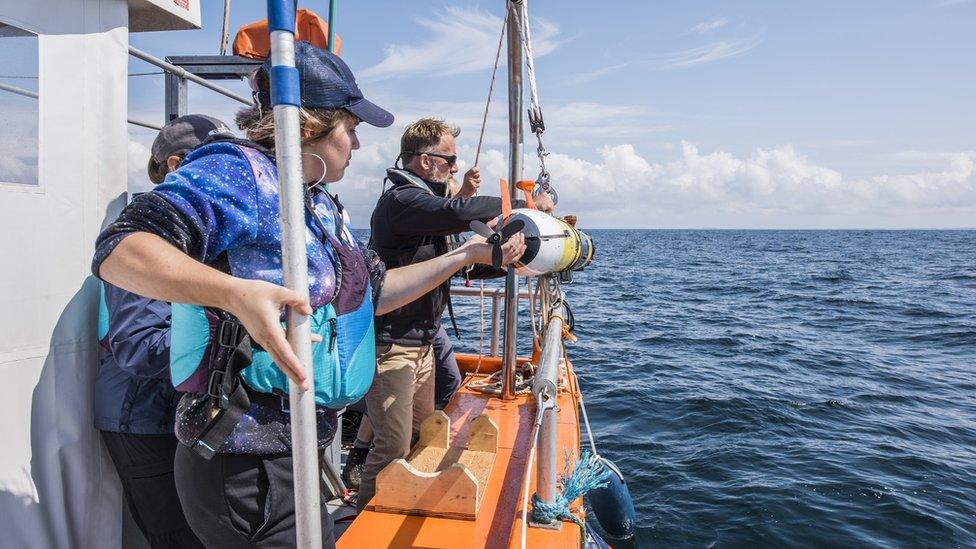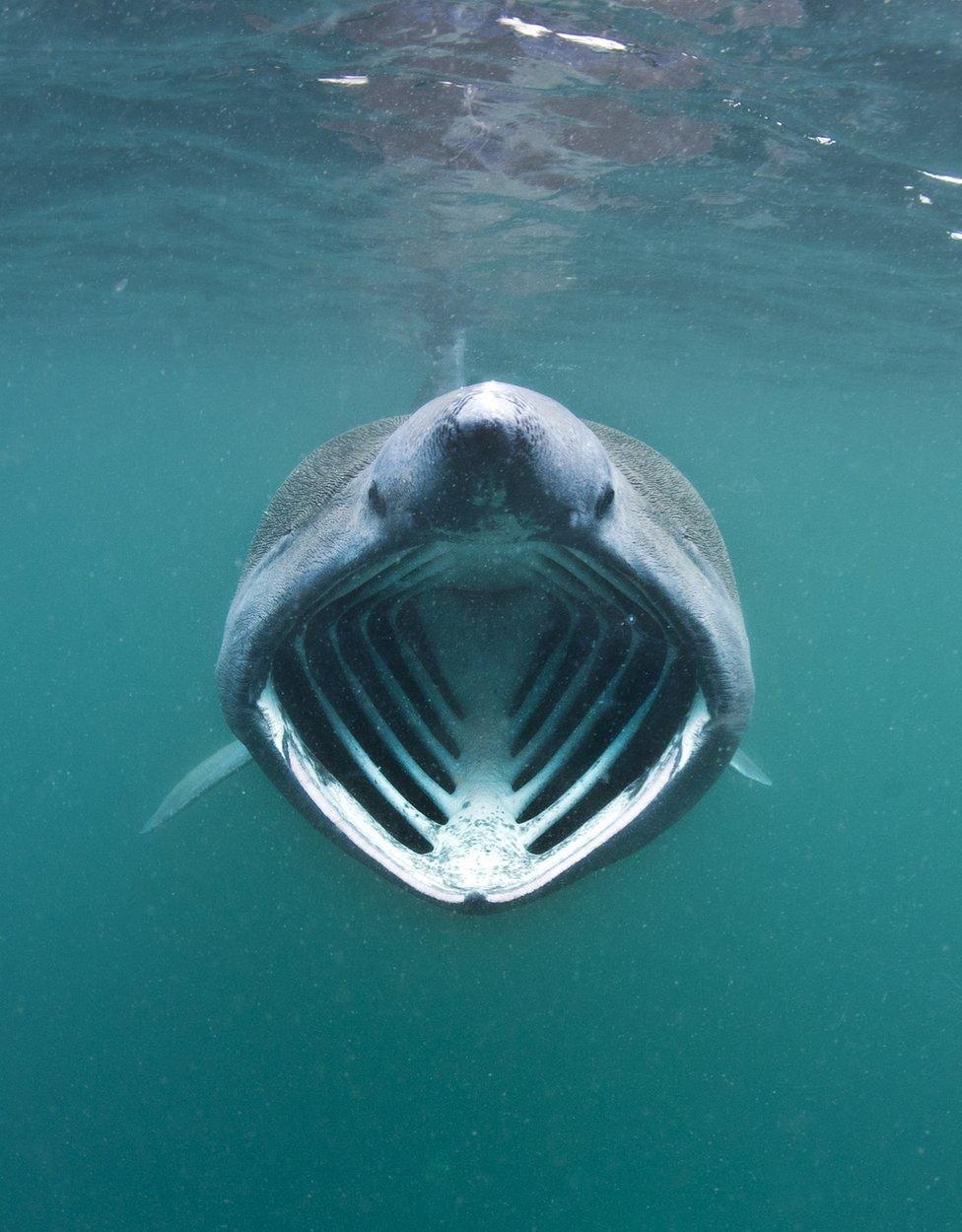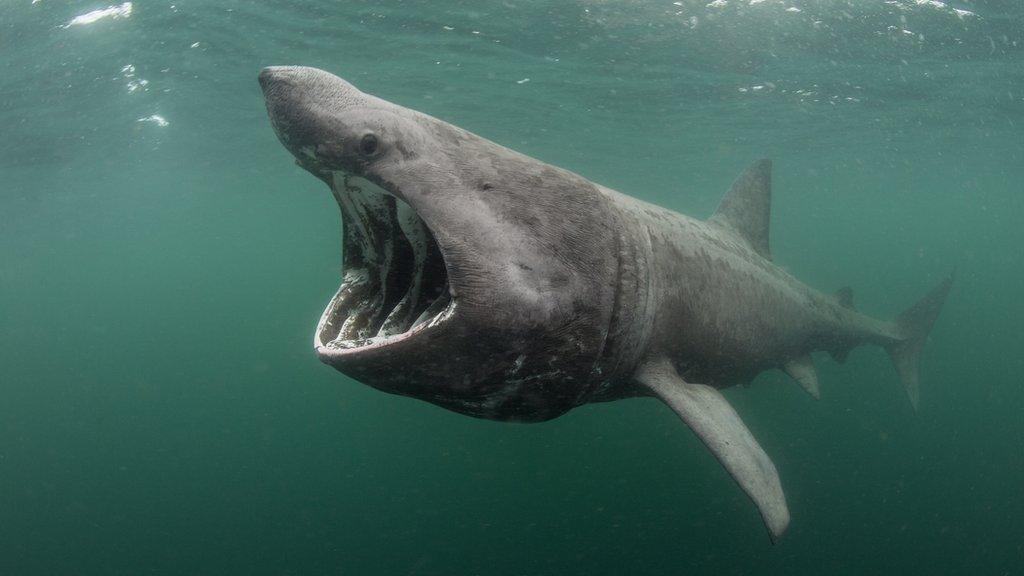Lives of basking sharks caught on 'SharkCam' in Inner Hebrides
- Published
The "SharkCam was used to gather data and video footage
Scientists have captured basking sharks in the Inner Hebrides using the UK's first autonomous "SharkCam".
Owned by the Woods Hole Oceanographic Institution (WHOI), the underwater robot captures movements and behaviours of the species - the world's second largest fish.
Large groups of basking sharks gather in the Sea of the Hebrides from May to October to feed on plankton.
It is hoped the footage will reinforce a case for conservation in the area.
Despite their prevalence in Scottish waters, little is known about basking sharks so conservationists want part of the sea to be designated as a marine protected area (MPA).
Secret lives of sharks
Fieldwork for the SharkCam project - which is funded by WWF/Sky Ocean Rescue, Scottish Natural Heritage (SNH), WHOI and the University of Exeter - took place in the proposed protected area in the Sea of the Hebrides.
Scientists used the autonomous underwater vehicle (AUV) to follow basking sharks below the surface of the water.
The technology, called REMUS SharkCam, collected high-quality o ceanographic data and wide angle high-definition video of their behaviour from a distance.
One device deployed off the coast of Coll and Tiree last month showed the sharks moving through the water column, potentially searching for food, feeding near the surface and swimming close to the seabed.


The WHOI team prepare to deploy the REMUS SharkCam
It is hoped details of the lives of sharks - including social interactions, group behaviours and courtship - will be uncovered through further analysis.
According to Scottish National Heritage, it is suspected that basking sharks may even breed in Scotland - an event that has never before been captured on film.
The group also plans to use camera tags attached to sharks and advanced sonar imaging to assist their findings.
Underwater behaviour
Dr Suzanne Henderson, marine policy and advice officer at SNH, who has worked on the basking shark tagging and research project run by SNH and the University of Exeter since 2012, said: "These giant fish are spectacular and watching them feed gracefully at the sea surface is such a special and memorable experience.
"This year's collaboration has allowed us to use a combination of camera technologies and given us a glimpse of basking sharks' underwater behaviour - a real first and very exciting. The footage has already made us reassess their behaviour, with the sharks appearing to spend much more time swimming just above the seabed than we previously thought.
"It really brings home why it's so important that the species and its habitat are protected by designating the Sea of the Hebrides as a Marine Protected Area."

The Sea of the Hebrides MPA is one of four possibilities currently under consultation by the Scottish government, which will run until 30 August.
Their aim is to protect marine ecosystems, habitats and species, which can help restore the area for people and wildlife.
Dr Jenny Oates, WWF SEAS programme manager, said the technology showed why marine life should be protected as it faced "increasing pressure".
She said: "It is essential that we safeguard our seas, not just to enable magnificent species like basking sharks to thrive, but because all life on earth depends on our oceans."
- Published31 July 2019
